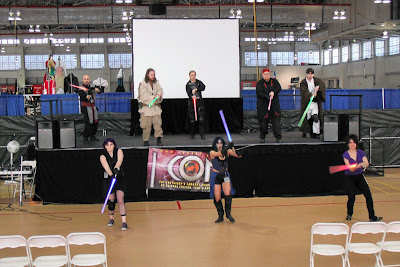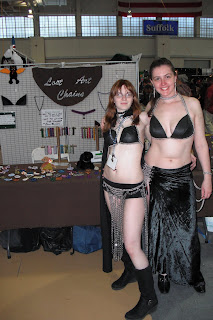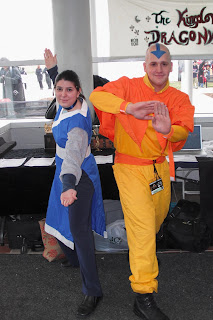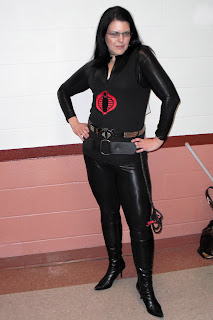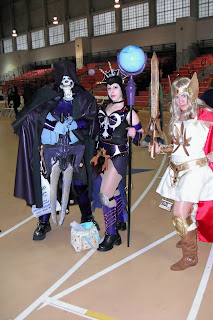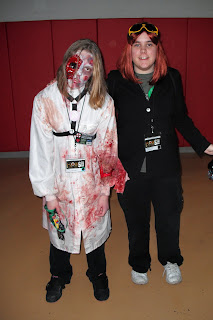 Shoot! Run! Get shot! Respawn! Run! Shoot! This is the basic gameplay for many first-person shooter games for consoles and PCs. It's also been adapted into the board game Frag: Gold Edition by Steve Jackson Games.
Shoot! Run! Get shot! Respawn! Run! Shoot! This is the basic gameplay for many first-person shooter games for consoles and PCs. It's also been adapted into the board game Frag: Gold Edition by Steve Jackson Games.The rules of Frag: Gold Edition are very simple. At the start of the game each player divides seven points between three stats: Health (resisting damage, and how many weapons you can use), Speed (how many dice you roll to move each turn), and Accuracy (how many dice you toll to hit, and how many attacks each turn).
During a player's turn they roll their speed and can move up to that many spaces. If a player crosses a space with a Weapon or Gadget symbol, they roll a die and on a 4-6 they get a weapon card or gadget card. Weapons range from chainsaws and flamethrowers to the Heavy Assault Gun and dreaded Portable Nuke. Gadgets include armor, ammo, and medpacks.
Then comes the attacks! The attacker rolls a number of their dice equal to their Accuracy and if they roll equal to or higher the spaces between them and their target, it's a hit. After a hit the attacker rolls a number of dice equal to the weapon's damage and the defender rolls a number of dice equal to their Health. If the health roll is higher, no damage is done; otherwise the target's Health is reduced by the attack roll divided by the Health roll. If the target's Health is zero, they're fragged: they drop their weapons (and leave a Blood Counter that can turned in to regain one health) and respawn on the board on their next turn. The fragger gets a special card giving them a benefit, and the first player to score three frags wins.
Frag: Gold Edition is a very close reenactment of the first-person shooter -- and therein lies much of the problem. Apart from the initial decision of how many points to put in each stat, there's no real strategy: Your character moves over Weapon and Gadget spaces to get more gear, then goes to blast their opponents. Further, moving a number of spaces close to an opponent equal to your Accuracy means an automatic hit. There is a little humor on some of the cards, but by and large this is a very straightforward attacking game. (On the plus side, this recent edition replaced the original folded-paper board with a cardboard piece with maps on each side, not to mention a dry-erase marker to keep track of player info -- and tons of six-sided dice!) Frag: Gold Edition is good for a simple slugfest with friends, but the action gets repetitive fairly quickly.
Overall grade: C
Reviewed by James Lynch











 Danny and Wheeler are forced into Building Wings, a mentoring program run by ex-addict Gayle (Jane Lynch). Danny gets to spend time with Augie Farks (Christopher Mintz-Plasse, best known as McLovin from Superbad), an uber-geeky teenager who wears a cape and is obsessed with L.A.I.R.E., a live-action roleplaying medieval fantasy world. Wheeler gets Ronne (Bobb'e Thompson), a little kid who curses constantly and is obsessed with breasts.
Danny and Wheeler are forced into Building Wings, a mentoring program run by ex-addict Gayle (Jane Lynch). Danny gets to spend time with Augie Farks (Christopher Mintz-Plasse, best known as McLovin from Superbad), an uber-geeky teenager who wears a cape and is obsessed with L.A.I.R.E., a live-action roleplaying medieval fantasy world. Wheeler gets Ronne (Bobb'e Thompson), a little kid who curses constantly and is obsessed with breasts.




